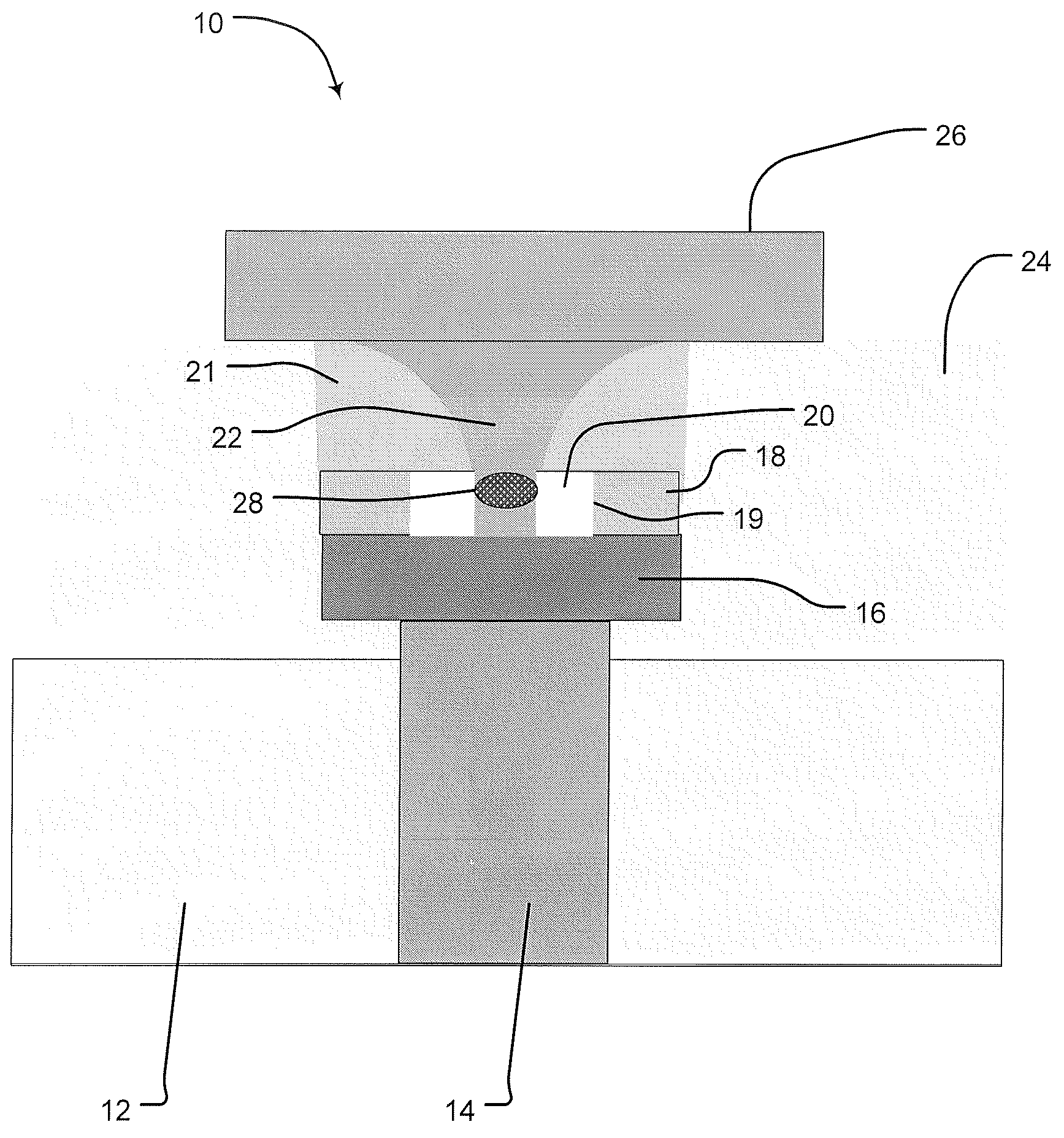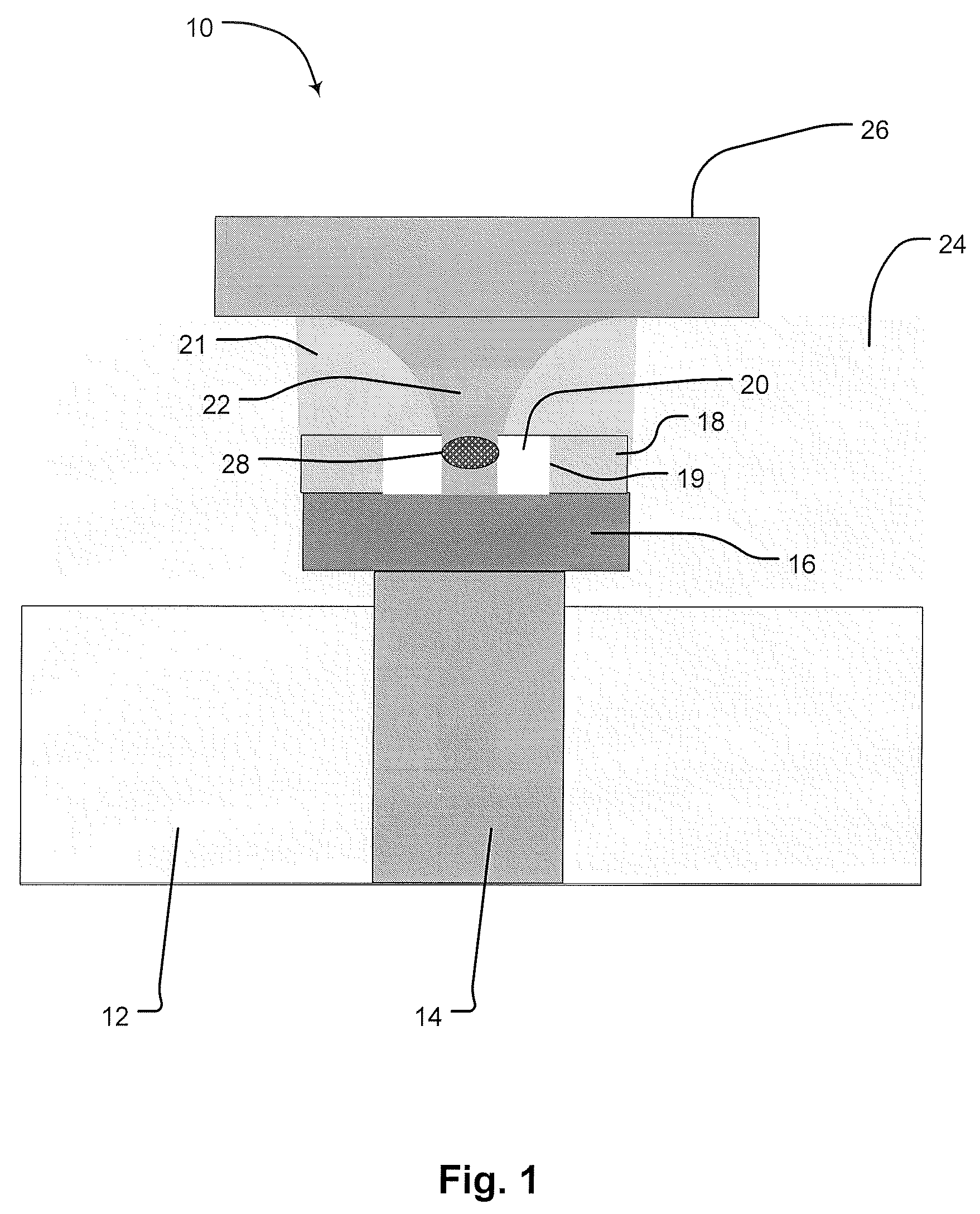Method for Forming Self-Aligned Thermal Isolation Cell for a Variable Resistance Memory Array
a technology of variable resistance and thermal isolation cell, which is applied in the direction of digital storage, semiconductor devices, instruments, etc., can solve the problems of manufacturing such devices with very small dimensions
- Summary
- Abstract
- Description
- Claims
- Application Information
AI Technical Summary
Benefits of technology
Problems solved by technology
Method used
Image
Examples
Embodiment Construction
[0014]The following detailed description is made with reference to the figures. Preferred embodiments are described to illustrate the present invention, not to limit its scope, which is defined by the claims. Those of ordinary skill in the art will recognize a variety of equivalent variations on the description that follows.
[0015]A memory element 10 is illustrated in FIG. 1. The element is fabricated on a substrate, or inter-layer dielectric layer, 12. The following discussion sets out the structure of this element, with the fabrication process following shortly thereafter. This layer preferably consists of silicon oxide or a well-known alternative thereto, such as a polyimide, silicon nitride or other dielectric fill material. In embodiments, the dielectric layer comprises a relatively good insulator for heat as well as for electricity, providing thermal and electrical isolation. An electrical contact, or plug, 14, preferably formed from a refractory metal such as tungsten, is form...
PUM
 Login to View More
Login to View More Abstract
Description
Claims
Application Information
 Login to View More
Login to View More - R&D
- Intellectual Property
- Life Sciences
- Materials
- Tech Scout
- Unparalleled Data Quality
- Higher Quality Content
- 60% Fewer Hallucinations
Browse by: Latest US Patents, China's latest patents, Technical Efficacy Thesaurus, Application Domain, Technology Topic, Popular Technical Reports.
© 2025 PatSnap. All rights reserved.Legal|Privacy policy|Modern Slavery Act Transparency Statement|Sitemap|About US| Contact US: help@patsnap.com



